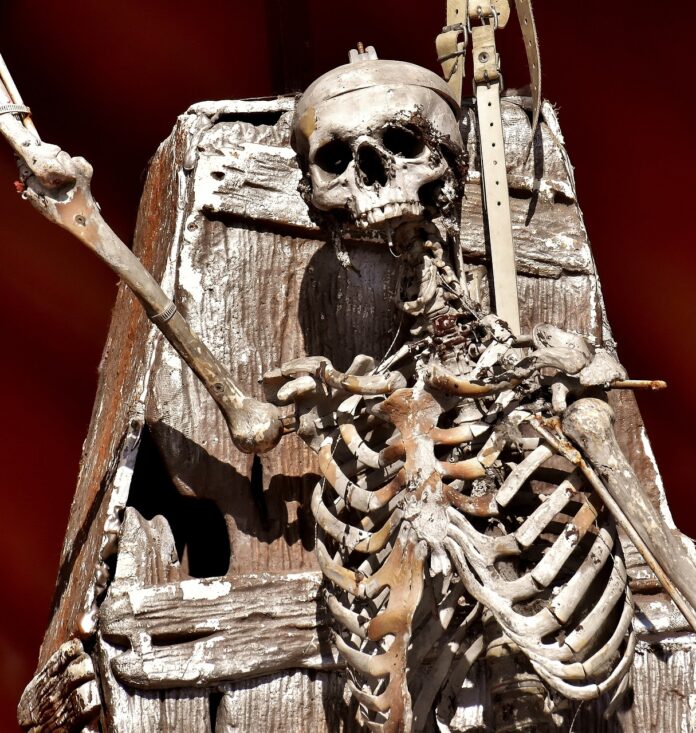The complex human skeleton has been shaped by millions of years of evolution and is considered close to perfection. However, it is unlikely to remain unchanged forever, as evolutionary processes never stop, although they progress so slowly that they are imperceptible over the lifetimes of dozens and even hundreds of generations.
Facts About the Skeleton and Bones:
- Number of Bones: Newborns have about 350 bones in their skeletons. As they grow, the number of bones decreases. Children have about 300 bones, while adults have around 206. This is because bones fuse together as a child grows, allowing for greater strength and stability.
- Gender Differences: Some bones in male and female skeletons differ in length and size. For example, women typically have a narrower rib cage and a wider pelvis. Men tend to have more pronounced brow ridges, and their limb bones are usually shorter and thinner.
- Skeleton Functions: Beyond providing movement, the skeleton also serves other functions, such as protecting organs from injury and producing red and white blood cells.
- Spinal Variation: About 20% of people have variations in the number of vertebrae.
- Extra Bones: Some people are born with extra bones, and in rare cases, some bones can develop later in life.
- Bone Color: Despite often being depicted as white, bones are actually more of a brownish hue.
- Bone Strength: Bones are stronger than steel. They surpass steel in strength while being much lighter. If the human skeleton were made of steel, a person would weigh around 250 kg (550 lbs).
- Skeleton Weight: On average, an adult’s skeleton makes up about 15-18% of their total body weight.
- Foot Structure: The human foot contains 26 bones, which accounts for 12% of the total bones in the skeleton.
- Hand Composition: The human hand, including the wrist, consists of 54 bones.
- Longest Bone: The femur, or thigh bone, is the longest and strongest bone in the human body, capable of withstanding very high loads.
- Smallest Bone: The smallest and lightest bone in the human skeleton is the stapes, located in the middle ear.
- Bone Marrow: Bone marrow weighs about 2.5 kg (5.5 lbs). Over a person’s lifetime, bone marrow can produce up to 650 kg (1430 lbs) of red blood cells and 1000 kg (2200 lbs) of white blood cells.
- Bone Training: When athletes train their muscles, their bones are also “trained.” Physical activity and exercise help strengthen bones.
- Bone Fractures: Statistically, arm bones are the most frequently broken. Half of all fractures occur in the arms, particularly in children. Additionally, 50-70% of visits to an orthopedist are due to knee injuries.
- Bone Composition: Bones are 2.5 times stronger than granite, and their elasticity exceeds that of oak.
- Bone Growth: Bones continue to grow until puberty. However, the composition and density of bone tissue change throughout life, depending on lifestyle, diet, and physical activity.
- Hyoid Bone: All bones in the body are connected, except for the hyoid bone, which is V-shaped and located at the base of the tongue. It does not connect with any other bones.
- Bone Composition: The primary components of bone material are minerals such as calcium, phosphorus, and sodium, along with the protein collagen.
- Skull Structure: The skull is not a single solid bone covering the brain. It consists of 29 separate bones that are fused together.
- Calcium Loss: If a person is bedridden for a long time, their bones can lose about 50% of their calcium, leading to a significant weakening of bone structure.
- Bone Water Content: Astonishingly, bones are composed of about 50% water. Every 7 years, the bones in our body completely renew themselves. Bones consist of 22% inorganic compounds, 12% organic materials, and 15% fat.
- Ribs: The ribs are the most fragile and easily broken bones. The 5th-8th pairs of ribs are the most commonly fractured because they lack connecting bones.
- Scapula: The scapula, or shoulder blade, is attached to the skeleton by 15 muscles, allowing for a wide range of motion in the upper limbs.
